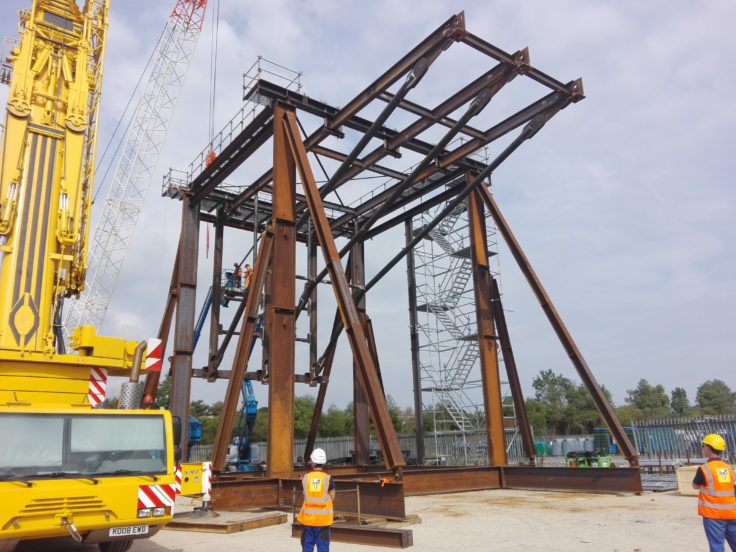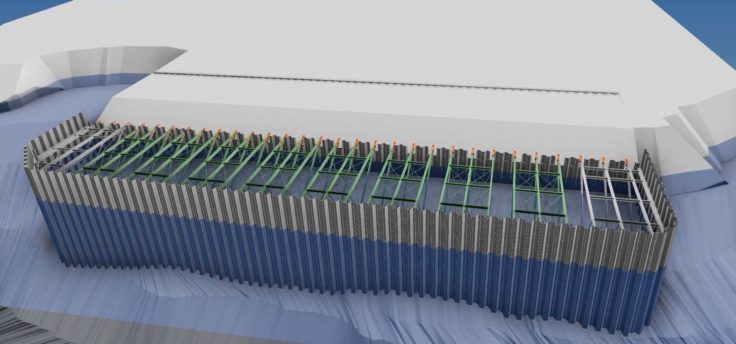Practice makes perfect
The construction team responsible for building a new Antarctic wharf at Rothera Research Station have been practicing full-scale assembly of the 30 tonne steel rigs in Southampton before deployment South.
The purpose was to identify unexpected challenges or additional pieces of equipment required whilst still here in the UK, rather than once everything has been shipped 11,000km to one of the most remote construction sites in the world.

BAM will begin building the new wharf at Rothera for the British Antarctic Survey (BAS) in December 2018. Designed to accommodate the UK’s new polar research vessel the RRS Sir David Attenborough, which will carry out cutting-edge research into climate change, the team has been busy creating a 3D digital model of the wharf and developing innovative working methods for this challenging construction project.
BAM Project Engineer Ian Wenkenbach, who oversaw the trial operation, said: “We wanted to put our theory into practice outside of the digital environment. It all went well, proving that all our months of planning work in practice, as well as on the computer screen. Now we are looking forward to recreating this for real at Rothera.”

A full-scale trial assembly and lift was undertaken of the 20 steel frames which make up the internal structure of the wharf. This included a hydraulic jacking system, a concept developed in-house to allow accurate levelling of the frames after installation as well as specially designed lifting frames, support structures and access platforms.
The final assembly and installation of the trialled frame in Rothera is programmed to take place in early 2020 but with the only mobilisation shipment leaving the UK in November 2018 the team needs to ensure everything works as planned now.
